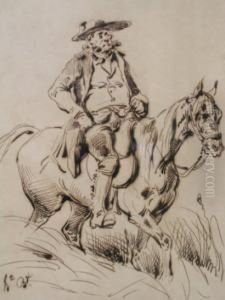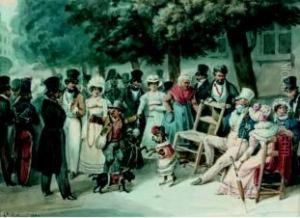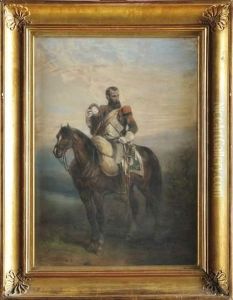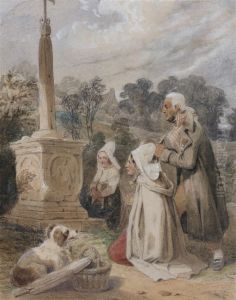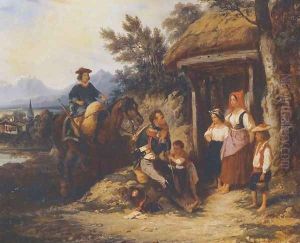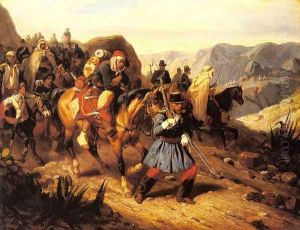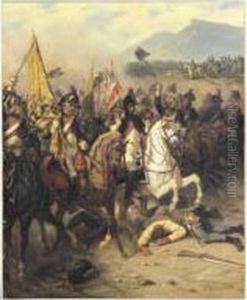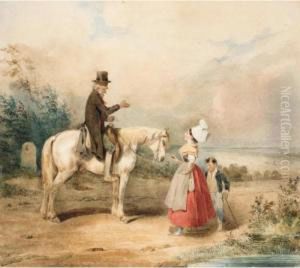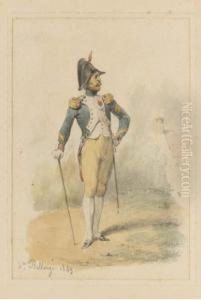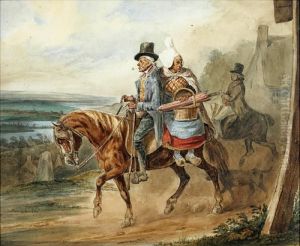Joseph-Louis Hippolyte Bellange Paintings
Joseph-Louis Hippolyte Bellangé was a French painter and printmaker who is best known for his depictions of military scenes from the Napoleonic era. Born on January 17, 1800, in Paris, France, Bellangé was exposed to the world of art at an early age. His father was a wallpaper manufacturer, which provided a creative environment that likely influenced Bellangé's interest in visual arts.
Bellangé initially trained under Antoine-Jean Gros, a painter known for his grand historical and Napoleonic battle scenes. This mentorship had a profound impact on Bellangé's artistic direction, as he soon developed a passion for depicting military subjects. Throughout his career, Bellangé's work was marked by a focus on the drama and heroism of war, often portraying French soldiers in moments of triumph or camaraderie.
In 1824, Bellangé made his debut at the Paris Salon, the official art exhibition of the Académie des Beaux-Arts in Paris. His paintings and lithographs quickly gained popularity for their dynamic compositions and emotive quality. Bellangé's talent for capturing the spirit of the Napoleonic era resonated with a French public that was nostalgic for the glories of the recent past.
Throughout the 1830s and 1840s, Bellangé's reputation continued to grow. He produced a significant body of work that included not only paintings but also lithographs and illustrations for books. His attention to detail and ability to convey movement and energy in his battle scenes earned him numerous commissions from the French government and recognition from art critics.
Bellangé's success allowed him to travel, and he took inspiration from his visits to battlefields and military encampments. His works often included studies of soldiers' uniforms and equipment, reflecting his commitment to historical accuracy. Despite the romanticism evident in his paintings, Bellangé's dedication to realistically portraying military life helped to document an important era in French history.
In his later years, Bellangé continued to exhibit at the Salon and received several honors, including the Legion of Honor in 1855. He remained an influential figure in French art until his death on April 10, 1866, in Paris. Today, Bellangé's works can be found in museums across France, including the Musée de l'Armée and the Louvre, as well as in private collections. His legacy endures as a chronicler of the Napoleonic Wars through the lens of art, capturing the essence of an epoch that shaped modern European history.






